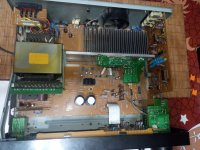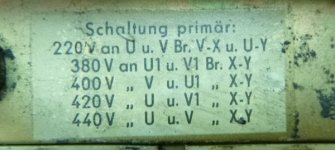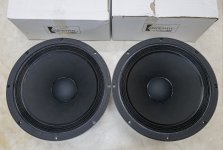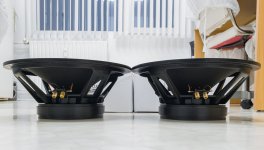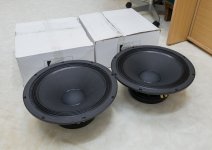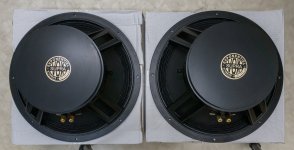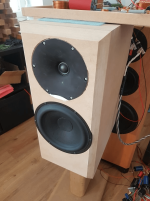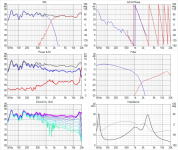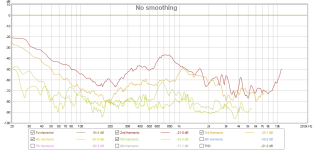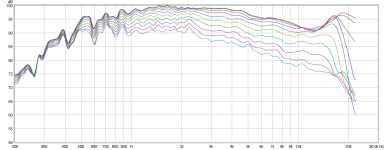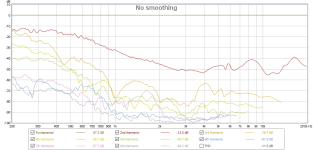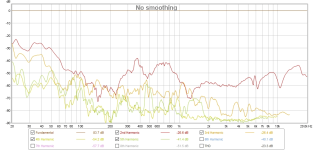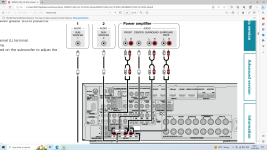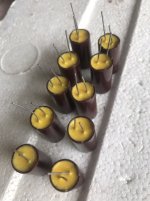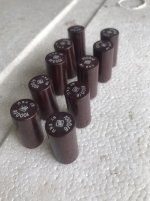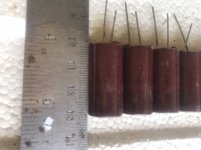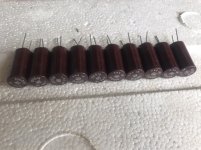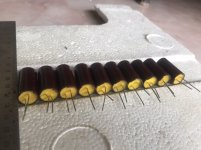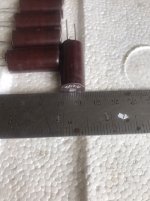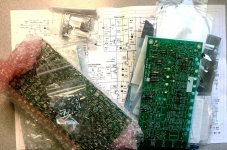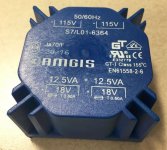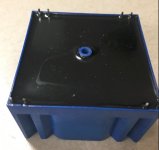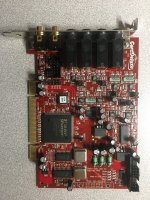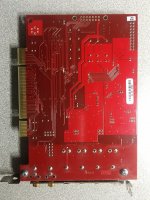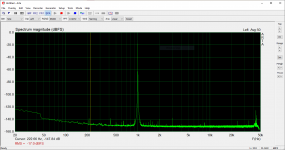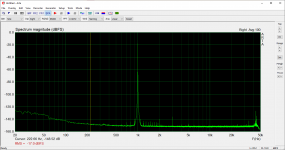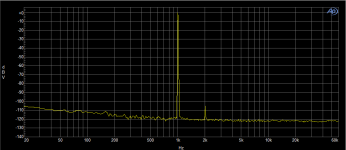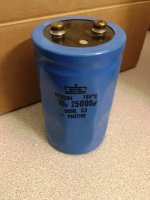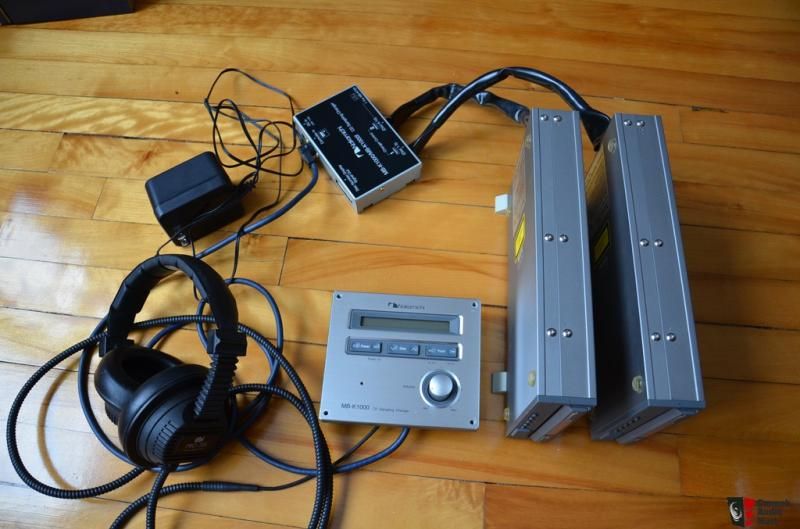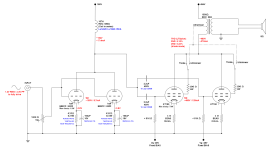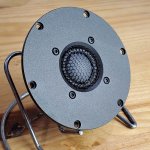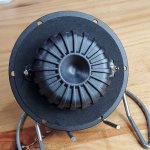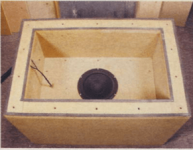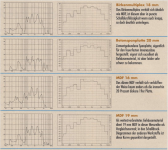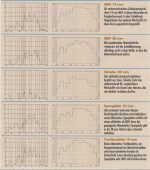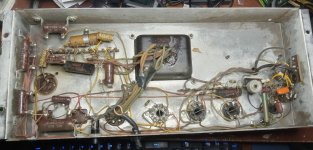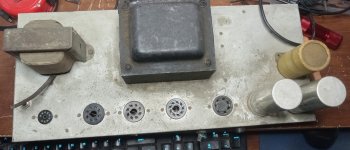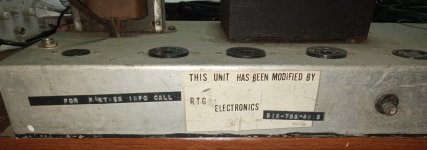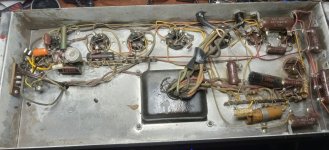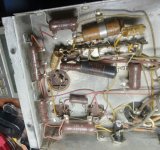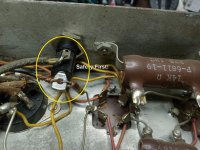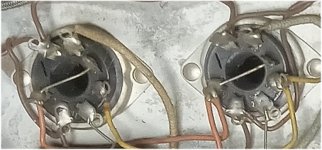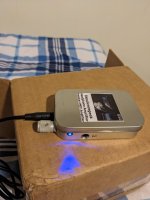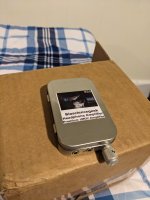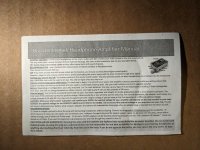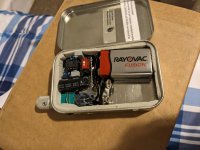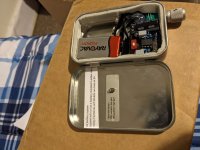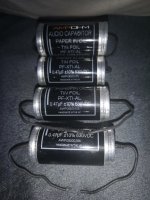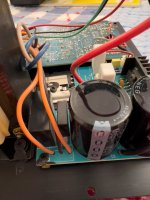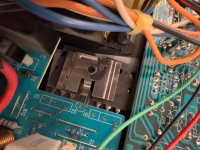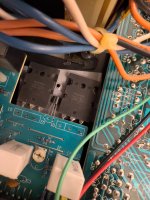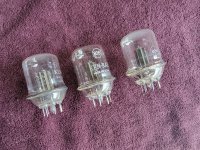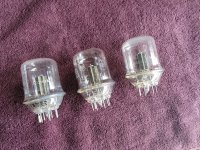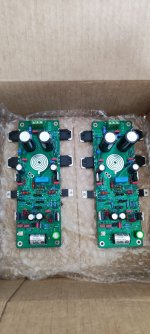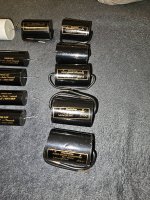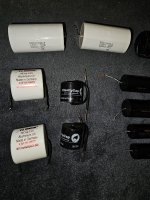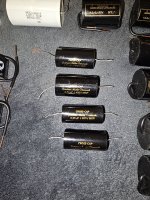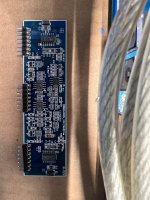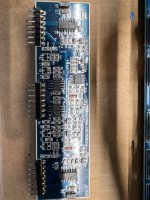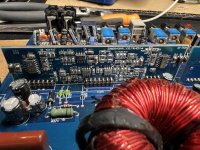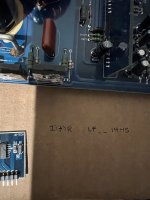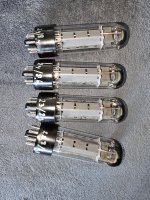Here is my version of a single supply chip amp. It is a little bit different than your typical datasheet single supply application, but deliberately so. Let me try to explain some of the reasons for the somewhat unusual design choices, together with the constraints that I set and the features that resulted. The working title is ''Single Supply Jelly Bean Bridge Amp'', which already tells half of the story.
- Single supply voltage, without resorting to high-powered line splitters or switchmode inverters.
- Not a Class A design, to allow the use of batteries. In fact I had an off-grid solar powered system in mind.
- No capacitor coupled speaker, to avoid loud thumps on poweronoff.
- Readily available off-the-shelf parts, easy to put together, no mandatory fancy-schmancy SMD stuff.
- Expressly NOT meant to dethrone your beloved High-End setup, but a reasonable performer nonetheless.
- Don't know / didn't care about the actual power output, but it's about what you'd expect from a chip amp.

The initial idea was to build a useful (read: not totally crappy) amp that would be suitable for a battery powered PV island system, without using a mains inverter and a classical transformer supply. As such I wanted it to be lean on power usage, but without resorting to Class B operation and skimp on bias current. That ruled out anything involving high powered linear line splitters or switchmode supplies. An SMPS might have been viable to generate a second rail with enough power, but that would have been a rather complex thing to build, and I did not actually want anything switchmode in the design to begin with. Class A was not an option due to the high idle current and therefore wasted power. I also did not want any circuit with a capacitor coupled speaker, because that would inevitably produce a loud thump in the speakers everytime power is applied to the amp. Class D would have been a viable option, but I think it is safe to say that you can better buy them ready-made than to go down the DIY route.
That left me with a bridged design, ultimately using chip amps for ease of construction. You might argue that a bridged amp is somewhat like a high powered line splitter, and you would be right; but it has the advantage of a higher output voltage swing and thus making better use of the limited supply voltage. It also eliminates the need for a speaker coupling capacitor. Both ends of the speaker get driven by an identical output stage, which means that both outputs will (ideally) work in unison on power-on, neatly avoiding any voltage transients across the speaker and thus turn-on thumps.
I also wanted the amp to be ''low noise'', both in terms of produced Johnson noise, as well as picked up noise like mains hum and any other RF cruft. Therefore I selected my resistor values one or two orders of magnitude below what you would usually expect. You can easily build an opamp inverting stage with 100 ohm resistors, where 1Vpeak would result in 10mApeak in the resistors, which any of the usual suspects audio opamp should be able to drive. In the current configuration, that's about what is needed at the input to drive the amp into clipping at 30V supply voltage.
Usually a low resistance feedback network around the output stage would necessitate a rather huge capacitor to maintain the low frequency response and keep the output offset voltage at bay. Since I already did away with the output coupling cap, I also did away with the feedback cap. The result is an output stage that amplifies right down to DC, and thus its own input offset, along with any additional output offsets of the preceding stages. That could lead to inacceptably high output offset voltages across the speaker if left unaccounted for. To take care of this, I have added a little offset voltage to one half of the bridge. It is not necessary to trim both halves to exactly 1/2 the power supply; you only need to adjust one half a little up or down (depending on device variation), so that the idle DC voltage between both outputs is zero. The way that I implemented the offset reference voltage generation is decidedly simple and not very sophisticated, and thus not perfect. It could have been even simpler, had I taken the voltage directly off of the wiper of the trim pot, but the way I wired it instead will prevent the amp from going haywire in case the wiper of the pot fails open-circuit or becomes flaky with age. Note the absence of almost any electrolytic capacitors - there is merely a single 220nF foil cap (C8) to keep the power supply noise from coupling into the non-inverting input of the inverting input stage, and that's all that is necessary, really.
In my prototype I have zeroed the offset at a supply voltage of 19V, and the output offset varied about plusminus 30mV along a supply voltage range of 6V to 30V. This is not optimal and might be fixed with little effort, but it is certainly not problematic in normal use, considering that plusminus 50mV are deemed acceptable. I did not test it, but I suspect that adding a fixed voltage reference might add some minor nuisances, like increased noise or thumps. Speaking of thumps, the behaviour of my prototype is not impeccable in this regard. It does produce an audible thump at turn-on and a less audible one at turn-off. They are still a little annoying, but far from the membrane-moving loud thumps you'd expect from a capacitor coupled design and thus much easier on the ears and on the speakers. Of course this behaviour might vary from build to build due to device variations; maybe it's actually possible to match the output stage chips for lowest thump? It is certainly acceptable as it is and I'm fine with it, though. The thumps did not become any louder or more severe during my bench testing, although I varied the supply voltage quickly over a wide range, including hard current limiting and dropouts down to 0V.
To keep the pickup of mains hum and RF interferences to a minimum, I have opted for a rather low input impedance and added some low-pass filters to the input stage as well as to the output stage. The resulting frequency response isn't ruler flat out to 20kHz and beyond anymore, but on the other hand it won't amplify the switching noise of the laptop brick all that much, should you choose to use one. Of course you are free to change the values to your liking, or leave the filter caps out altogeter. Again, an input impedance of about 1k should be no problem to drive nowadays, where your garden variety smartphone or MP3 player happily feeds 16ohm earphones.
As noted above, I have tested my protoype build with supply voltages in the range of 6V to 30V. 5V is too little already; it will still work, but the output is noisy and distorted. With around 6V as a lower limit, I would recommend the use of two Li-Ion cells in series, for a nominal 7.4V, as a useful minimum. Anything up to 8 cells in series (29.6V) will work, even with a charger connected (8x 4.2V = 33.6V). Anything in between is fine, too, like one or two (or three) 9V batteries, 12V or 24V lead-acid batteries with or without charger connected (11V to 14.4V and 22V to 28.8V), 12V wall warts, 19V laptop bricks, you name it. On the upper end of the spectrum I would set the limit at around 34V, depending on the opamps you're going to use. My intention was to hook it up to a 24V PV solar island system, which can see voltages approaching 30V during the day, and it will easily survive that condition. Some more headroom might be squeezed out by adding some zener pre-regs to the opamps and limit their voltage supply to a save value, but then again you'd probably just hit the current limit of the chip amps sooner and have nothing gained in the end.
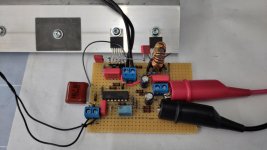
My prototype build uses TDA2030A as the output chip amps. Anything similar like the LM1875 should work as well. Gain is configured to 11 (or 20.8dB non-inverting) and should be stable. If not, you can increase the 1k's around the output stages a little, up to around 2.2k I'd say. The feedback networks of the two halves of one bridge channel do not have to be matched at all. They may actually be wildly different and then merely impose a limit on the overall output voltage swing; they won't add harmonic distortion, as described by Douglas Self in his book on power amplifiers.
For the other opamps I have used three of the four sections of a TL074. My next prototype will be a two-channel stereo PCB and thus need two more opamps. I am planning to use a TL074 again for the input stages, and an additional 741 for the rail splitter. Yes, you read that right: a seven-forty-one, in a design from 2023! Since it won't be tasked with any actual audio duty, can deliver more current than the TL074, is cheap and ubiquitous (and I still have some in stock), that should be a fairly good choice. Again, feel free to substitute your own here, as long as it's unity gain stable and can deliver some current.
Powered with 19V from a lab supply, the prototype idles around 40mA and didn't show any traces of oscillation connected to several different speakers.
LTspice schematic attached.
